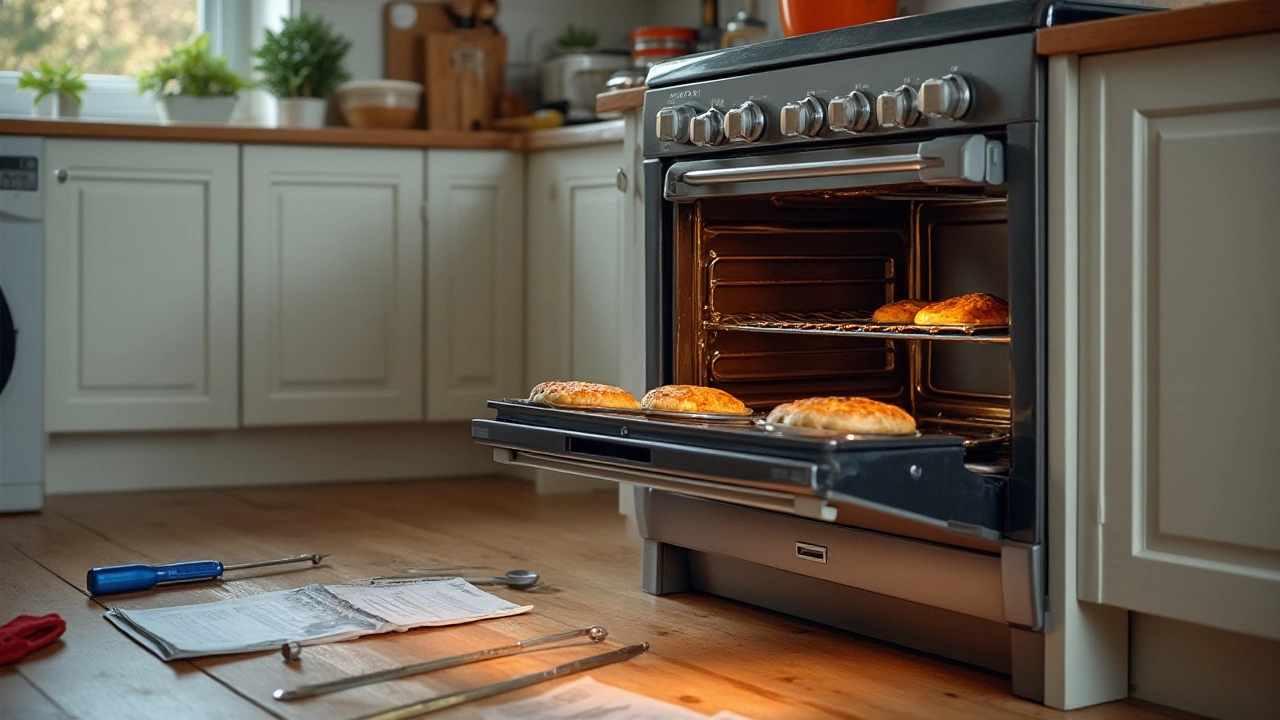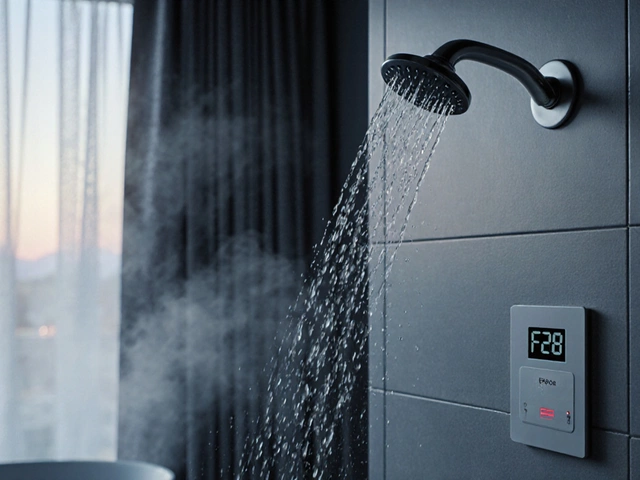Ever been halfway through making dinner—maybe something as simple as baked chicken nuggets for your kids—and suddenly the oven gives out? Mine did last winter, right as a fresh tray of cookies was about to go in. Ovens die in dramatic fashion, usually when you need them most. It throws your whole evening, and leaves one big question smoldering in your mind: Is it actually worth repairing a 5 year old oven, or do you just suck it up and buy a new one?
Why Do Ovens Break at 5 Years?
You might think five years sounds young for an oven to cause problems, but the reality is pretty interesting. Most ovens these days live somewhere between 10 to 15 years if they’re treated right. But that number can swing depending on how much you bake, if you keep up with simple cleaning, and honestly, if you just get unlucky with parts. Manufacturers admit that some of today’s appliances aren’t built with the tank-like reliability your parents’ oven had. By the five year mark, the most common failures are heating elements burning out, control boards glitching, or temperature sensors going wonky. Gas ovens might see issues with igniters or valves. All these pieces are replaceable, and that’s where you start doing the mental math.
Here’s a fact: According to a 2024 survey from the National Association of Home Builders, modern ovens have an average functional lifespan of about 13 years, but up to 25% experience a significant repair within the first five years. It’s more common than you’d think.
To make things more frustrating, today’s lots-of-electronics ovens have more that can fail compared to the all-manual models from the 1980s. This means a five year old oven might sound like "just getting started," but in reality, it’s already a few innings into its expected game.
The True Cost of Oven Repairs—What’s Normal Now?
Money is usually the dealbreaker. Average repair costs, according to HomeAdvisor in 2025, are between $150 and $400, depending on what’s busted. Quick fixes like replacing an oven igniter or thermostat can be on the lower end—$100 to $250 for parts and labor. However, if you’re up against a touchpad or control board failure, costs spike. A new control board might run $300, sometimes more for high-end brands. And if your oven is out of warranty—and most five-year-old models are—you’re footing the whole bill.
Got a brand name oven? Sometimes you pay a little more for parts, because manufacturers like Bosch and Viking basically price their name. Entry-level ovens usually have cheaper replacement components, but might not always have as many repair techs willing to work on them. And don’t forget: service call charges—that initial fee just for a tech to show up—are usually around $80 to $100.
Here’s a look at typical 2025 oven repair costs:
| Repair Type | Average Cost (USD) |
|---|---|
| Heating Element Replacement | $150–$250 |
| Control Board Replacement | $300–$600 |
| Igniter Replacement (Gas) | $120–$225 |
| Door or Seal Repair | $125–$200 |
| Service Call/Diagnosis | $80–$100 |
If you were planning on a full oven replacement, today’s prices (even for basic models) start around $600 and easily head north of $1,700 for anything with smart features. So, in most cases, if the oven repair bill is less than half of what a new oven would cost, fixing it might actually be the math-smart move—unless there’s hidden damage or it’s just been one thing after another.
How to Judge If Your Oven Is Worth Fixing
So, is forking out $250 on a five year old oven a good call? Let’s talk about what matters. First, check if your model is known for running forever or being a lemon. Some brands (like GE and Whirlpool) have a reputation for tough reliability, while others are infamous for expensive repairs after warranty runs out. Hop online and look for reviews or owner’s forums specific to your oven model. What are folks saying after year five? If you’re seeing horror stories about repeated failures, consider that a red flag.
Don’t ignore how the oven’s been used. Heavy bakers or big families (like mine—Tristan cranks out pizzas every Friday) will naturally push wear-and-tear faster. If you’ve only used the oven for an occasional casserole, your parts might last longer. Also, peek under the hood—well, the interior—at seals, racks, hinges, and the door. Rust, sagging or bent parts, or a flaky door seal can signal more issues lurking.
If your repair is for a single, obvious issue (say, just an igniter or bake element), it’s usually safe to fix. But if you’ve had three or four repairs since last year, you’re in "money pit" territory. Nothing’s worse than putting cash into a fix, then a few months later, something else breaks down. At that point, constantly patching things up becomes stressful and more expensive in the long run.

DIY or Call a Pro? What Can You Fix Yourself?
You don’t need a PhD in electrical engineering to tackle some oven repairs. Lots of the classic issues—like a busted bake element, a worn-out oven bulb, or a broken door seal—can be handled with just a screwdriver and ten minutes of YouTube research. Even swapping a faulty igniter on a gas range isn’t rocket science. And if you’re comfortable with unplugging appliances or shutting off gas lines, you might save a couple of hundred bucks on labor charges.
But let’s be honest: If you’re looking at a digital panel issue, control boards, or anything involving complex wiring or gas lines, don’t mess with it. One wrong move and you’re not just voiding any lingering warranty, you could actually make things a whole lot worse. Appliance repair techs are pricey for a reason—they know how to handle 240 volts of angry current or a leaky gas valve safely. And sometimes their "magician" reputation is well-earned, especially with today’s WiFi-connected ovens.
If you do try the DIY route, always label your wires and take a cellphone pic first. And only buy parts from a legit supplier, not some super cheap knock-off from a no-name website, or you’re asking for repeat trouble.
Tips to Avoid Costly Oven Repairs in the Future
Wish your oven could skip repairs in the first place? There’s a quick punch-list you can follow (I swear by these).
- Clean spills ASAP. Burnt-on gunk messes up heating elements and sensors, plus gummed-up doors cause heat loss.
- Skip the self-clean cycle if your oven’s already acting up. High heat can fry control boards—repair pros see it all the time.
- Don’t slam the oven door. Hinges are expensive to replace and little kids (I’m looking at you, Tristan) love to test how much force those things can take.
- Check and replace the door seal every few years. A tight seal keeps heat in and keeps the oven heater from overworking.
- Watch for obvious danger signs—like a burning smell, uneven cooking, slow preheating, or flickering displays. Catching small stuff early saves you money later.
If you’re facing repairs, look out for warranties on parts/labor from your local shop—most offer three months, some will even do a year. And always keep your oven manual handy. Checking part numbers and error codes can lead you to a faster fix, or at least help a pro figure it out sooner.
The Bottom Line: Repair, Replace or Reconsider?
At five years in, your oven’s not ancient, not brand new—right smack in that gray area where either path could make sense. Statistically, most major repairs happen in ovens’ fourth to seventh year. If your machine’s been a faithful kitchen soldier, and you’re looking at a one-time repair under $400, fixing it is usually the wallet-friendly play. That’s especially true for mid-range or pricier brands, where replacement costs will sting more.
If your oven has been glitchy, needed multiple repairs, or you really want an upgrade for energy efficiency or features, it might be time to move on. Appliances have moved fast lately—lots now have air fry, smart controls, or better self-cleaning—so if you can stretch to upgrade, new models will wow you (and maybe save on electricity).
Bake happy, and remember: sometimes the best kitchen decisions come down to a mix of old-fashioned gut feeling and smart number crunching. Trust your instincts—but don’t ignore the math.





